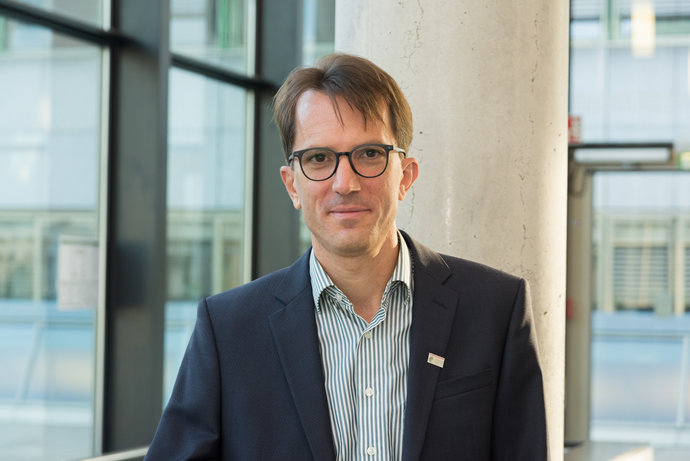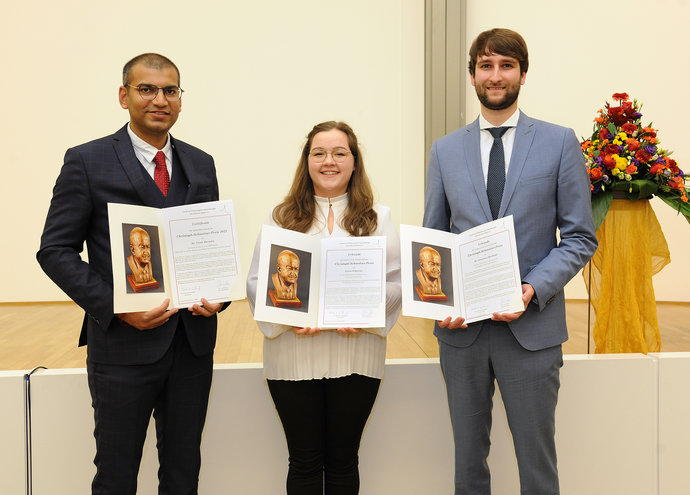
The first patients were treated with heavy ions 25 years ago – whereas therapy was long limited to the head and pelvis, today tumors in the upper body, for example in the lungs, liver and pancreas, can also be treated, even though they are constantly in motion due to breathing. Some methods are already in clinical routine, other developments from the GSI Helmholtzzentrum für Schwerionenforschung offer new hopes and opportunities for cancer treatment.

Since the turn of the century, six new chemical elements have been discovered and subsequently added to the periodic table of elements, the very icon of chemistry. These new elements have high atomic numbers up to 118 and are significantly heavier than uranium, the element with the highest atomic number (92) found in larger quantities on Earth. This raises questions such as how many more of these superheavy species are waiting to be discovered, where – if at all – is a fundamental limit in the…

Recently, an international research team has successfully carried out a high precision x-ray spectroscopy measurement on helium-like uranium, the simplest and heaviest many-electron atomic system. The obtained results allow, for the first time in this regime, to disentangle and to test separately high-order (two-loop) one-electron and two-electron quantum electrodynamics (QED) effects and set a new important benchmark for QED in the strong field domain. Moreover, the achieved accuracy of 37…

GSI and FAIR mourn the loss of an outstanding scientist and pioneer of nuclear physics who shaped nuclear physics research at GSI Helmholtzzentrum für Schwerionenforschung for decades. The former GSI division head Professor Dr. Gottfried Münzenberg passed away on January 2, 2024 at the age of 83.

The program of the “Wissenschaft für Alle” lecture series of GSI and FAIR will continue in the first half of 2024 to offer the audience an insight into the newest findings in physics. Interested parties can either attend the event in the lecture hall of GSI/FAIR following a registration or dial into the broadcast of the event via video conference using an internet-enabled device such as a laptop, cell phone or tablet. The program will begin on Wednesday, January 24, 2024, with a talk by Dr. Haik…

Professor Christian Graeff from GSI’s Biophysics Department has been awarded the highly sought-after Consolidator Grant from the European Research Council (ERC). The prestigious research funding award supports a project to improve tumor therapy with a funding sum in the millions. Christian Graeff will lead this research project as principal investigator and conduct it with a corresponding team. The renowned prize also underlines the outstanding quality of...

It was both a tribute to an exceptional lifetime achievement and an encouragement for the next generation of scientists: With a solemn memorial colloquium held at the GSI/FAIR campus in Darmstadt, the GSI Biophysics department paid homage to biophysics Professor Gerhard Kraft, who passed away in March 2023. This event was combined with the annual awarding of the Christoph Schmelzer Prize to three young scientists....

An advanced new three-dimensional (3D) computer simulation of the light emitted following a merger of two neutron stars has produced a similar sequence of spectroscopic features to an observed kilonova. "The unprecedented agreement between our simulations and the observation of kilonova AT2017gfo indicates that we understand broadly what has taken place in the explosion and aftermath," says Luke J. Shingles, scientist at GSI/FAIR and the leading author of the publication in...

Researchers of the GSI Helmholtzzentrum für Schwerionenforschung and the Technical University in Darmstadt, together with an international team, succeeded in producing and detecting the long-sought atomic nucleus oxygen-28 for the first time. The experiment was conducted at the Japanese research center RIKEN. A decisive factor was the first-time use of the meter-high neutron detector NeuLAND, which weighs several tons and was developed for the future accelerator center FAIR ...












